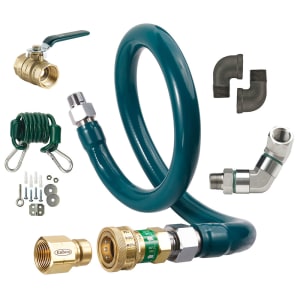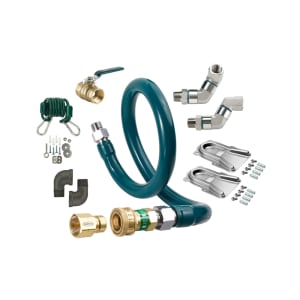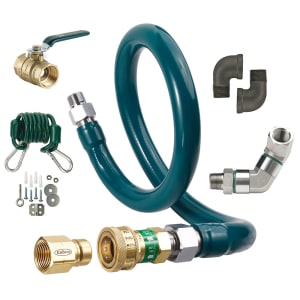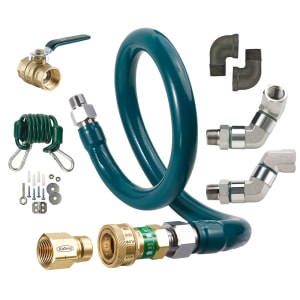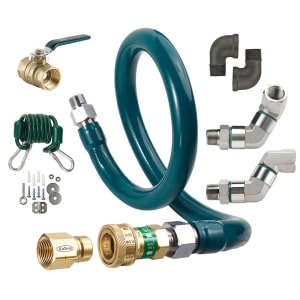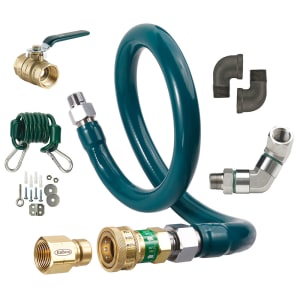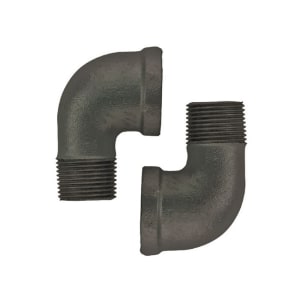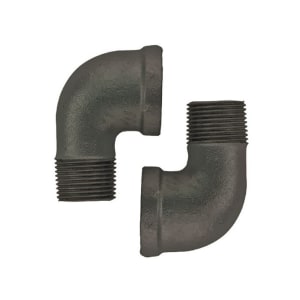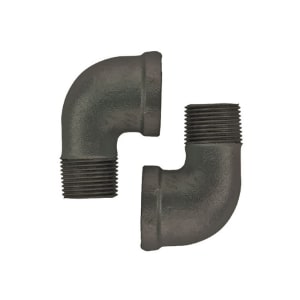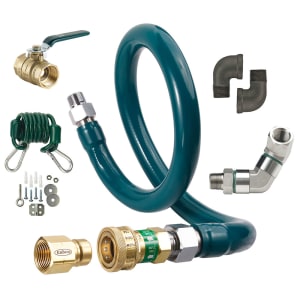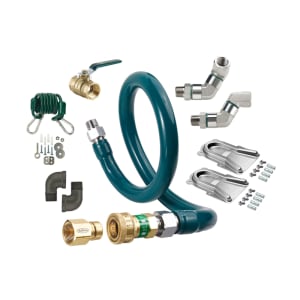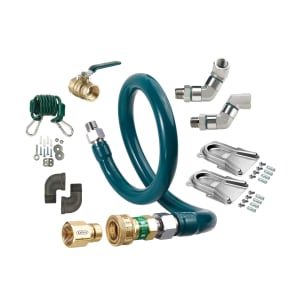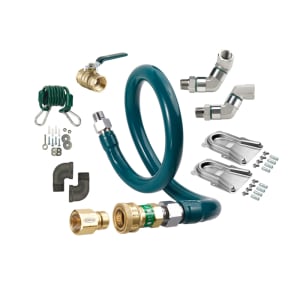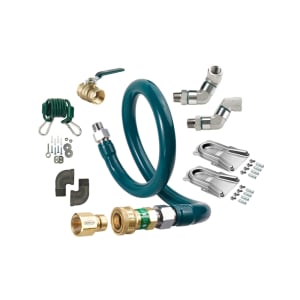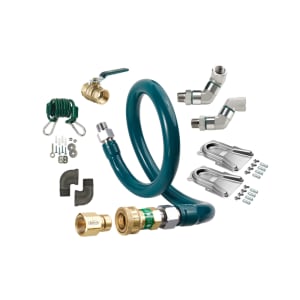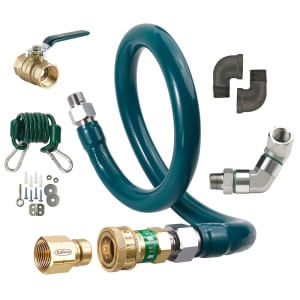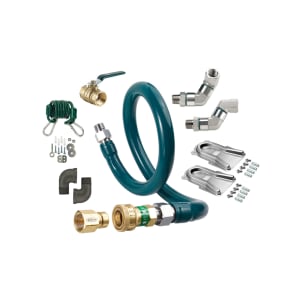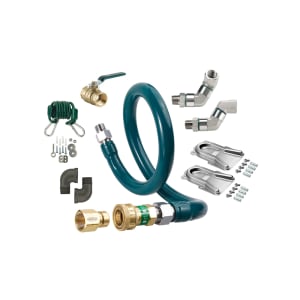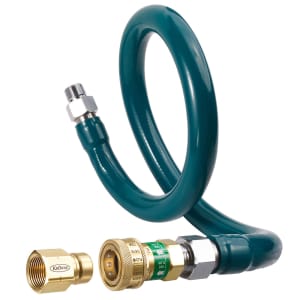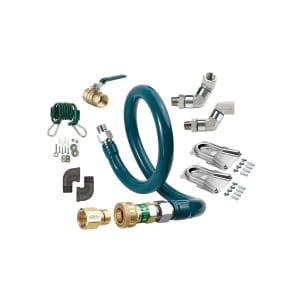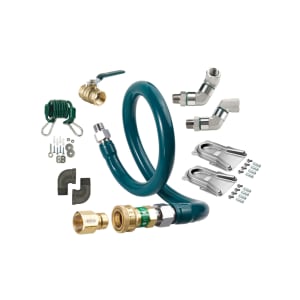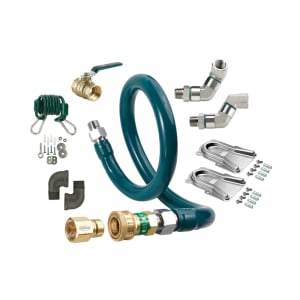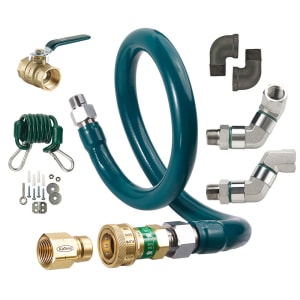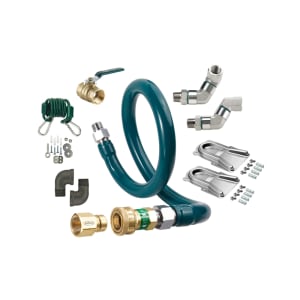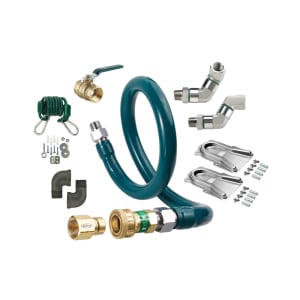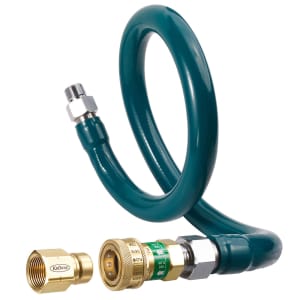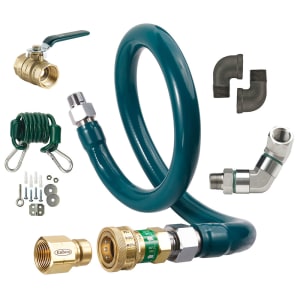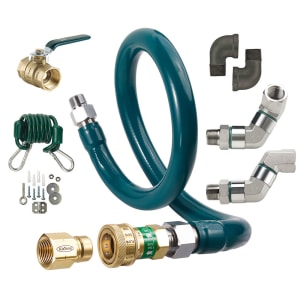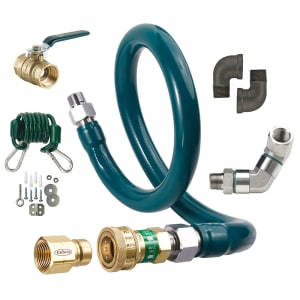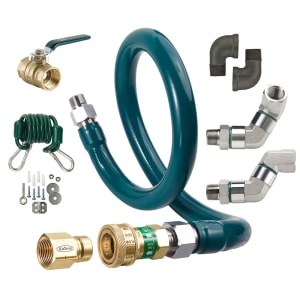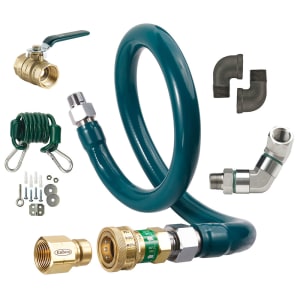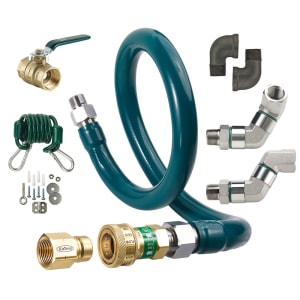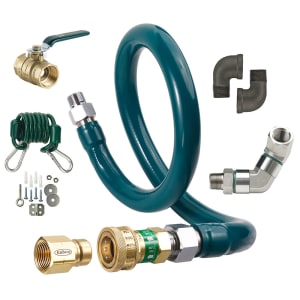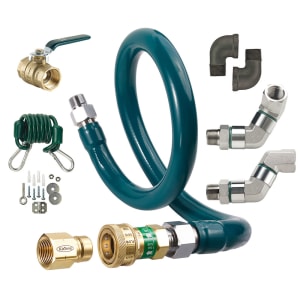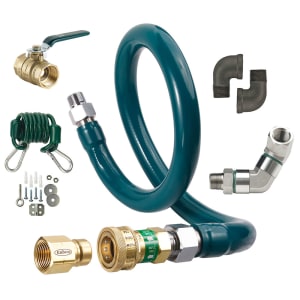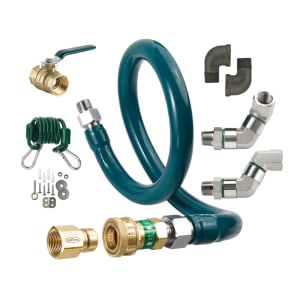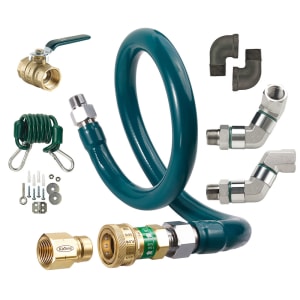Commercial Gas Hoses and Fittings
A gas hose is a crucial accessory for equipment in any commercial kitchen powered by gas, since it safely connects equipment to the gas it requires once it has been properly installed. To select the right gas hose, you should know how long your hose needs to be as well as the inside diameter, or coupling size, your equipment requires. More
Commonly Asked Questions About Gas Hoses
How do I size my gas hose connector?
Gas hoses may be 12, 24, 36, 48, 60, or 72 inches long. Determine the gas hose length you need by measuring the distance between the equipment and the wall behind it. If the equipment is mounted on casters, add a few inches to that measurement to ensure it can be comfortably moved.
Coupling sizes range from 1⁄2 inch to 11⁄4 inches in diameter. The inside diameter of your gas hose connector determines how much gas is allowed through, so you should consider the maximum number of BTUs your equipment will use during peak operation. Your equipment's compatible coupling size and gas fittings should be listed in your owner's manual or the equipment's spec sheet.
What equipment uses a gas hose?
Gas hoses should be used with any equipment that relies on gas to operate. This often includes fryers, ranges, and ovens.
How do I connect a gas hose to my equipment?
To ensure your gas hose is properly connected and to prevent any operational or safety issues that can arise from improperly installed equipment, gas hoses should be installed by a qualified professional. Instructions for properly installing your hose may be provided by the manufacturer online or with your equipment.
What is a flexible gas hose?
A flexible gas hose can be used with gas equipment that is mounted on casters. As long as the hose being used is the correct length, this type of gas hose connector makes it easy to roll equipment out for cleaning and maintenance.
What is a restraining cable?
Gas connector kits often include a restraining cable, which is slightly shorter than the included hose. This cable connects the gas equipment to the wall behind it, taking the strain off gas connectors. Restraining cables may be required by your local health and safety regulations.

